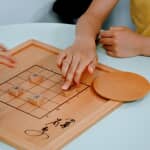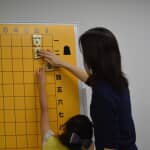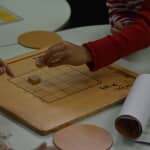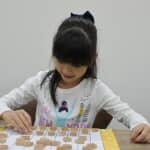Shogi 30 January 2017
Shogi Rules: – How to Play Shogi – : Step 2-1 Moves of Kei/Keima (Knight) and Kyo/Kyosha (Lance)
Explore art of Shogi. A professional Shogi player invites you to the world of Shogi along with traditional Japanese culture.
“Shogi Rules: – How to Play Shogi – “ is now available on the blog of I-tsu-tsu Co., Ltd.
Even a novice player will be able to play a standard Shogi. There are three steps and one step has approximately 10-15 lessons.
You will be able to play Mini Shogi and learn how to play standard Shogi with 9 x 9 squares. It is full of fun!
The previous step
Step 2-1 Moves of Kei/Keima (Knight) and Kyo/Kyosha (Lance)
Let’s start Step 2 from today. Two more new pieces are introduced in Step 2-1. After today’s two pieces, you only have two more new pieces to learn. Let’s fully memorize the piece moves so that you can start the standard Shogi soon! So, the new pieces for today are Kei/Keima (Knight) and Kyo/Kyosha (Lance).
1. Kei/Keima (Knight)
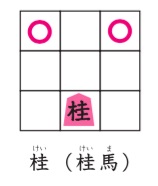
Kei (Knight) can move to the square marked with a circle.Kei (Knight) is the only piece that can jump over the other pieces. It may be easy for you to learn the moves of Kei (Knight) if you visualize the motion of hopscotch.
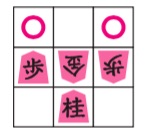
As you see in the above, Kei (Knight) can jump over the opponent’s pieces and your own. Interesting, isn’t it?
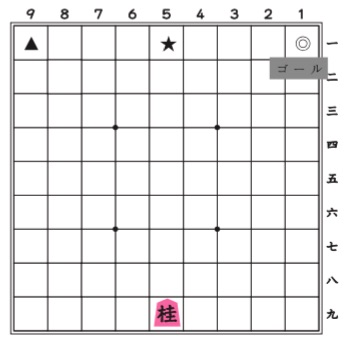
As seen in the above, it helps you to understand the features of Kei’s (Knight’s) moves. When you practice to move Kei (Knight) to the square with a star mark. I remember that I myself practiced this Kei (Knight) jumping game that my father told me to do when I was a child.
2. Kyo/Kyosha (Lance)
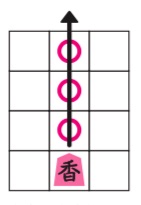
Kyo can moves any number of squares directly forward as far as there are squares available.
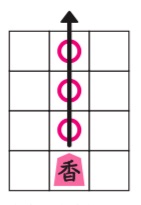
However, Kyo (Lance) cannot jump over your own pieces on the board as seen in the above.
You need to pay attention to that both Kei (Knight) and Kyo (Lance) can move forward but backward. You had better confirm that the opponent’s piece will not capture your Kei (Knight) or Kyo (Lance) before you move these two.
By the way, I think that Chinese characters for Kei (Knight) and Kyo (Lance) may be unfamiliar to your children. The Chinese character for Kei (Knight) means cinnamon, a tree with a noble aroma. Kyo’s (Lance’s) character also means an aromatic tree. It is said that Shogi adopted treasures then for the piece names when Shogi was developed. Gyoku (King), Kin (Gold), and Gin (Silver) are also treasures. Some say that Shogi is a game to fight for treasures. Interesting, isn’t it?
Comments from the Girls’ Mom
Step 2 has started today. We are getting ready to play the standard Shogi. It is very exciting.
My girls learnt the moves of Kei (Knight) and Kyo (Lance) today. I think that they learnt them quickly and smoothly with the analogy of hopscotch and the interesting move features. They also enjoyed the Kei’s (Knight’s) jumping game. They call Kei (Knight) “frog” or “rabbit” since the piece jumps around, and found familiarity in the piece.
The next step
